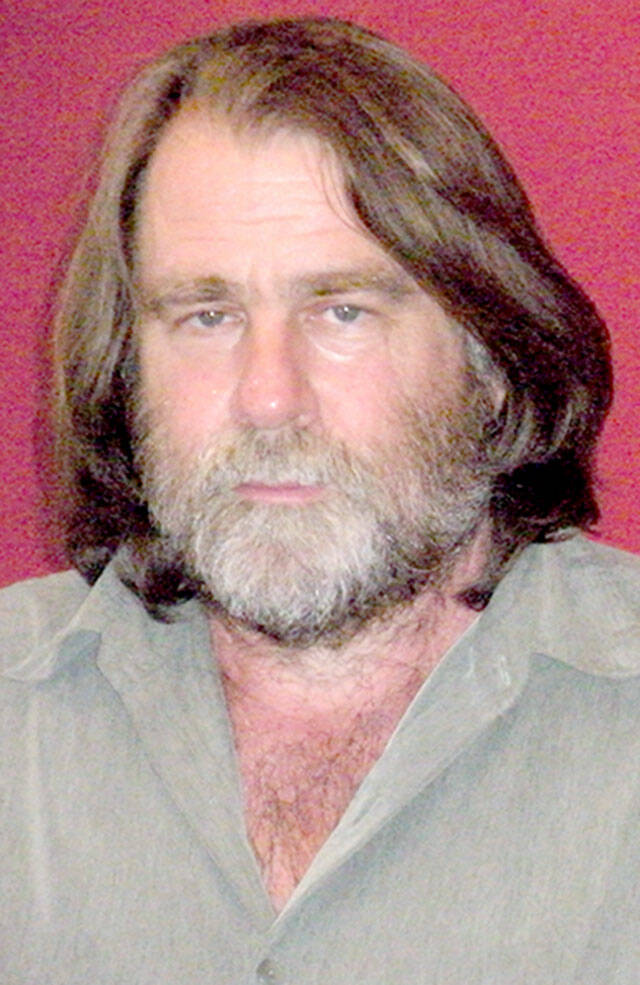PORT ANGELES — Pat Neal has been a fishing guide on the Hoh River for more than 30 years and in that time he’s seen populations of salmon and trout in decline.
There are several efforts to restore fish populations, but Neal is skeptical those projects are having a positive effect.
In many cases, he says, they’re having the opposite.
“To me, these rivers are being managed for extinction,” Neal — who is an historian and preservationist, the author of four books and a humor columnist for the Peninsula Daily News as well as a fishing guide — told a meeting of the Port Angeles Kiwanis Club on Thursday.
“They’ve been managed to the point of endangered species status,” Neal said, “which is a crime to me. It just means that our rivers look more dead than alive to the people managing our fisheries because they’re relying on the endangered species funding for their questionable activities.”
According to Neal, millions of dollars are spent on various restoration projects but fish populations haven’t necessarily recovered.
“I always ask these people where have you brought back a run of fish, well they can’t tell me,” Neal told Peninsula Daily News after his presentation.
“That’s the thing that gets me — with all these millions of dollars — where have you brought a fish run back, anywhere? They can’t tell me, because they haven’t.”
Neal’s observations are considered controversial by those involved in salmon restoration.
He admits his is a cynical view to have, but after spending decades working in the fishing industry on the Olympic Peninsula he said it’s the conclusion he’s drawn.
Fish populations across the Olympic Peninsula are widely variable, but are generally trending downward according to data from the State of Salmon report published by the Washington Recreation and Conservation Office.
The report tracks salmon and steelhead trout species in various regions across the state and for those around the Olympic Peninsula — Puget Sound, Hood Canal and Washington Coast — populations are showing different signs of improvement.
Fish populations on the Hood Canal are showing some positive signs, according to the most recent report, but populations in Puget Sound have remained stagnant for decades. For the Washington Coast region, which includes the Hoh River where Neal lives and works, the report says the number of fish returning is far below potential.
“Washington’s coastal rivers enjoy some of the strongest salmon, steelhead trout, and bull trout populations in the state,” the report said, but that’s still below historic runs.
“Based on historical records, steelhead runs are just 55 percent of their 1950s levels and chum, once the most abundant salmon in Willapa Bay, return at a fraction of historical levels,” the report says.
According to the report, recent trends of the region’s 117 non-listed populations are mixed. Since the 1980s, spring Chinook salmon and steelhead trout have declined in number; coho salmon fluctuate widely in response to ocean conditions such as the 2014-2016 marine heat wave and Fall Chinook and chum salmon returns show no recent trend.
There are several factors that impact fish populations, including ocean temperatures, industrial fishing and spawning habitats, but Neal said efforts to restore the state’s rivers haven’t shown strong results and in some cases may be causing more harm than good.
During his presentation to the club, Neal showed a photo of a man-made log jam built as part of an effort to restore fish spawning habitats.
“There’s a forest along there, they fall the trees into the river, drag it through the steelhead spawning beds, dump the concrete on top of it, and the fish don’t come back to spawn,” Neal said.
An easy solution, according to Neal, would be to allow private landowners to place biodegradable boxes with fertilized fish eggs in creeks on their property to help restore fish populations. Neal said some people are already doing that but it’s currently illegal.
Neal said that local tribes have had success in reintroducing fish populations by using native broodstock.
“The tribes should be running (fish restoration) because they’re the ones that actually produce the fish,” Neal said.
Neal said he gets emotional discussing the issue because he’s been watching the fish populations slowly decline.
“Just watching the extinction, being a witness to extinction, it’s awful, it’s like watching the buffalo disappear,” Neal said, “and everybody’s saying we’re doing all we can to save them. I’m not seeing that.”
________
Reporter Peter Segall can be reached at peter.segall@peninsuladailynews.com.

